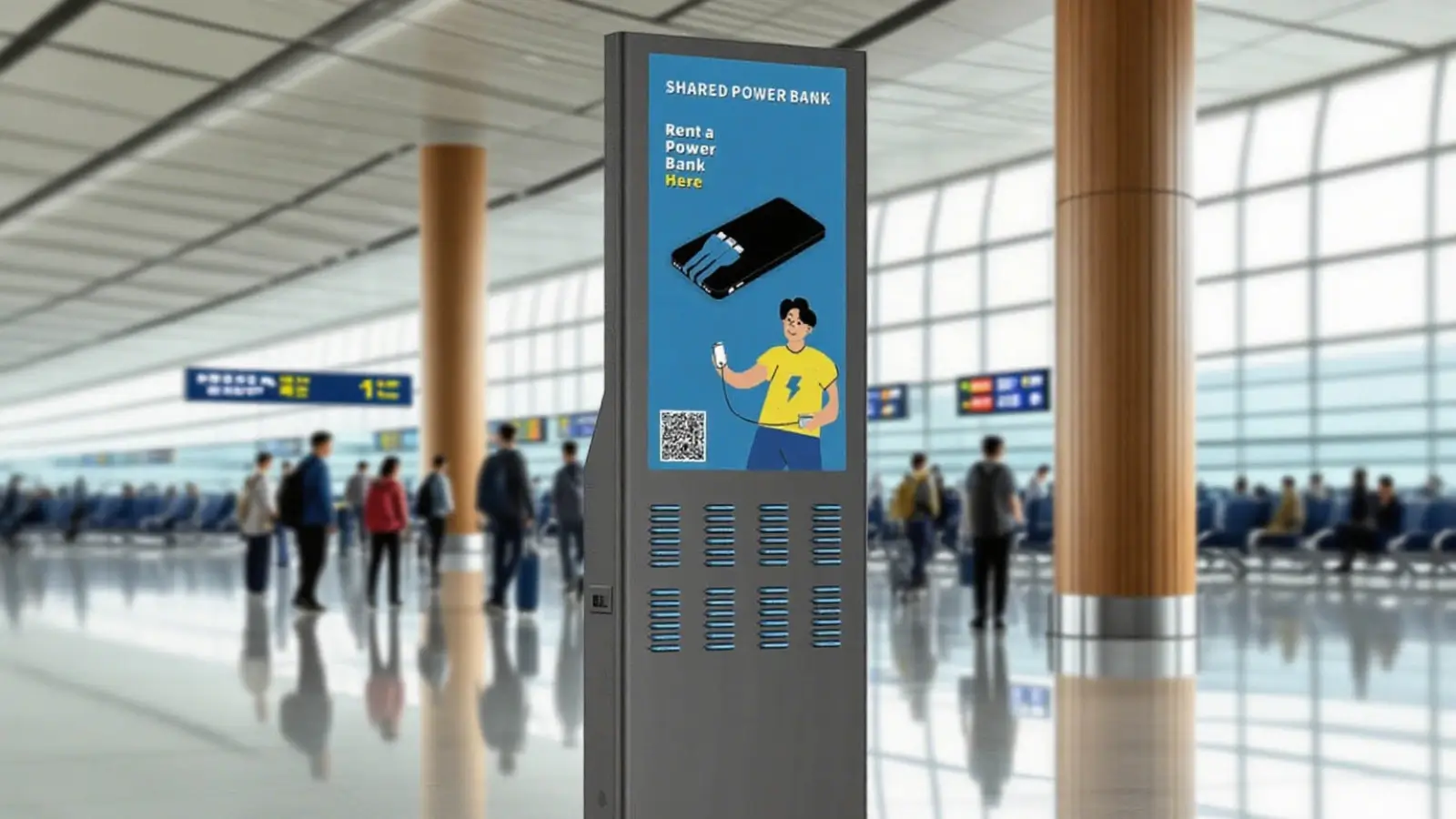


Airport power bank rental services come in. Designed to solve this exact problem, they have quickly become a secret weapon for smart and stress-free travel.
In the past, airports did offer charging options—but they came with numerous limitations. Charging outlets were scarce, and during peak travel times, it was common to see multiple travelers crowding around a single outlet, waiting their turn. Moreover, these outlets were often fixed in specific locations, meaning you had to stay put while charging. On top of that, bringing your own charger added to your luggage burden. For those who forgot theirs, it became a frustrating “so close, yet so far” dilemma.
The concept of shared power banks originally gained popularity in urban settings like cafés and shopping malls, offering on-the-go charging solutions. With advancements in technology and growing user demand, this service has now expanded to more environments. Airports, as high-traffic zones with long passenger dwell times, have become strategic deployment hubs. Today, whether at large international airports or regional terminals, shared power bank kiosks can be found in key locations like departure lounges and security checkpoints—providing convenient charging access at all times.
From its origins to its current widespread adoption, shared power bank services have demonstrated distinct advantages in the airport context—benefiting travelers, airport operators, and service providers alike.
Shared power bank kiosks are strategically located in high-traffic areas throughout airports. Travelers no longer need to lug around bulky power banks or search for fixed outlets. Instead, they can simply scan a QR code on the machine, follow a few quick steps, and retrieve a fully-charged power bank. The device is portable, allowing travelers to move freely—to boarding gates, restaurants, or shops—while staying powered up. When done, they can return the power bank at any kiosk across the airport. The whole process is automated and hassle-free.
With a wide range of phone models comes a variety of charging ports. Airport power banks are thoughtfully designed to include multiple charging cables—Lightning, Micro USB, and Type-C—covering nearly all mainstream smartphone brands. This makes it a truly one-stop charging solution for all travelers.
The rental service is highly flexible, allowing travelers to choose durations that suit their needs. If you’re only waiting briefly for your flight, you can rent for just a few hours. If you’re in for a long layover, you can keep the device longer to ensure your phone stays powered. This adaptability minimizes stress and caters to every travel scenario.
Compared to buying disposable power banks or monopolizing a fixed airport outlet, renting a power bank is significantly more cost-effective. Most services charge by the hour and offer a daily cap to prevent excessive charges. For the occasional traveler needing a quick charge, it’s a high-value, low-cost solution.
When your phone dies mid-travel, it can cause major disruptions. So how exactly do you rent a shared power bank at the airport?
These kiosks are usually located in busy areas—departure lounges, near boarding gates, or within commercial zones. Here’s how to find them:
Once you locate a kiosk, simply scan the QR code on the machine with your phone. Follow the on-screen instructions to register and log in. After successful payment, the machine will automatically unlock a slot for you to collect a power bank. Check the device to ensure it’s not damaged and has sufficient battery. A deposit may be required, which will be refunded upon return if no issues are found.
Connect your phone to the power bank using the appropriate cable. Most units come with multiple connectors—choose the one that matches your phone. Take care of the device during use to avoid loss or damage. If you run into any problems, customer service is usually just a tap away.
Once your device is charged or before your rental time is up, return the power bank to any kiosk operated by the same brand in the airport. Insert the power bank into the return slot and follow the instructions on the screen. After confirmation, you can view your rental duration and cost on the app. Deposits are usually refunded within 1–3 business days.
To get the most out of these services—and avoid hidden charges—here are a few smart tips:
Before heading to the airport, use the provider’s official app or mini-program to check the kiosk locations, service rules, and availability. This saves time and ensures you're not caught off-guard.
Always check the power bank’s battery level before renting. Then, based on your schedule, decide how long you’ll need it. Short layovers may only require a 2–3 hour rental, while long connections could need all-day use. Match this with the brand’s pricing model to avoid unnecessary fees.
While charging, make sure your phone is locked and avoid performing sensitive actions, like online banking or entering passwords. Disconnect from the power bank after charging to reduce data security risks.
Stick to the rental period to prevent overage charges. Make sure the device is properly inserted and the return process is completed successfully. Always confirm the return status via app, and if you spot any unexpected charges, contact customer support immediately to resolve the issue.
Airport power bank rental services have become a key enabler of smart travel, offering convenience, flexibility, safety, and affordability. As technology continues to evolve and service quality improves, these rentals will deliver even better charging solutions—making travel more relaxed and connected than ever before.